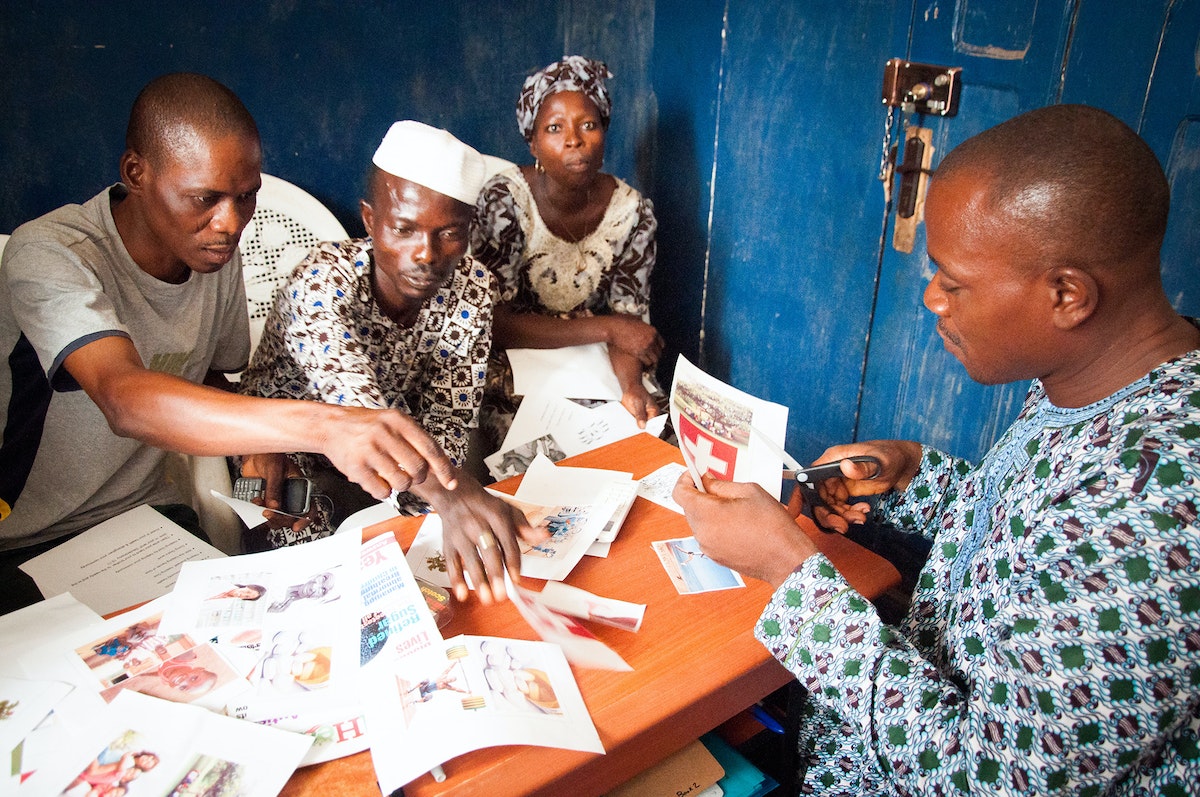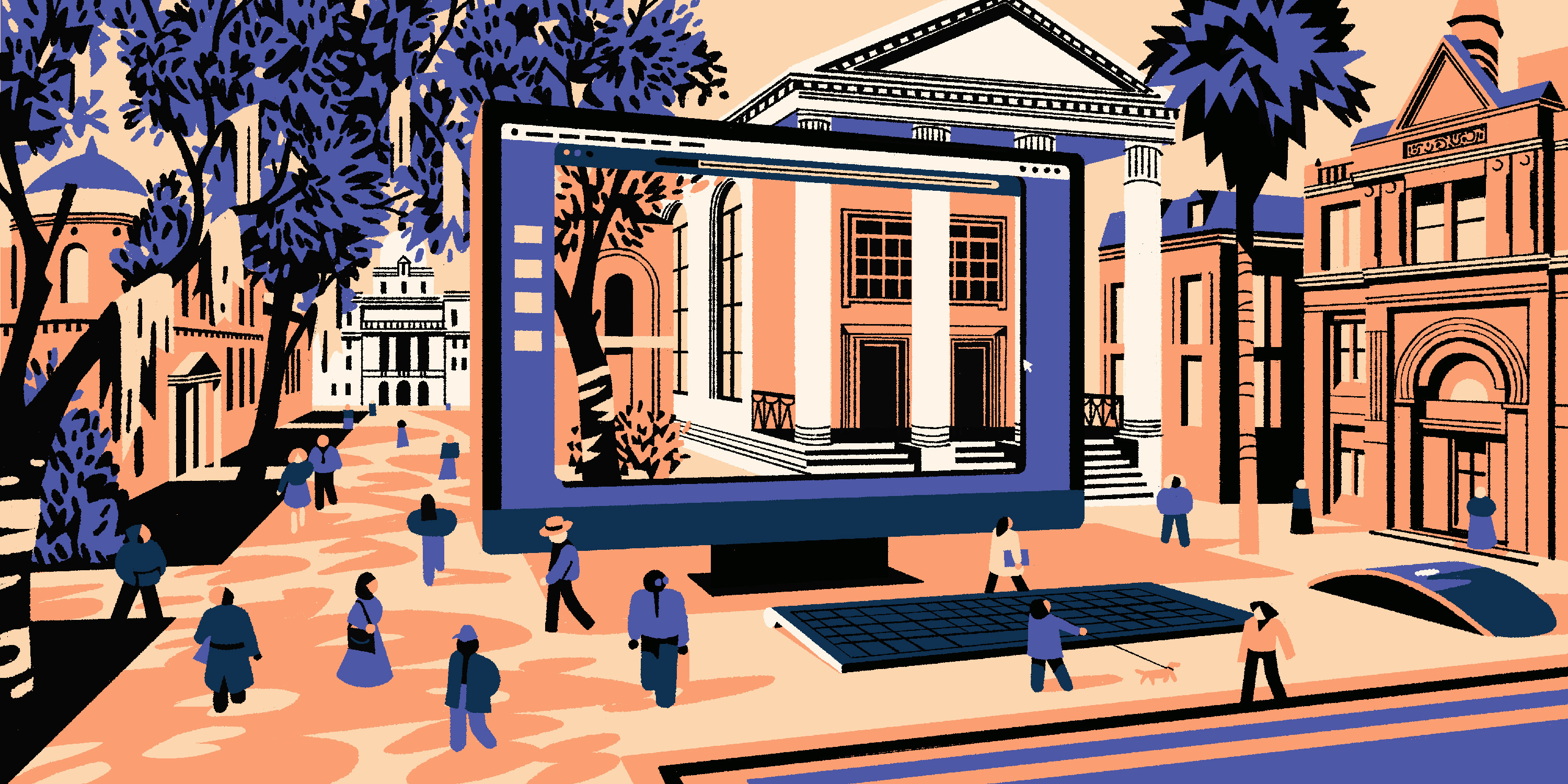Designing a warm welcome for Ukrainian refugees
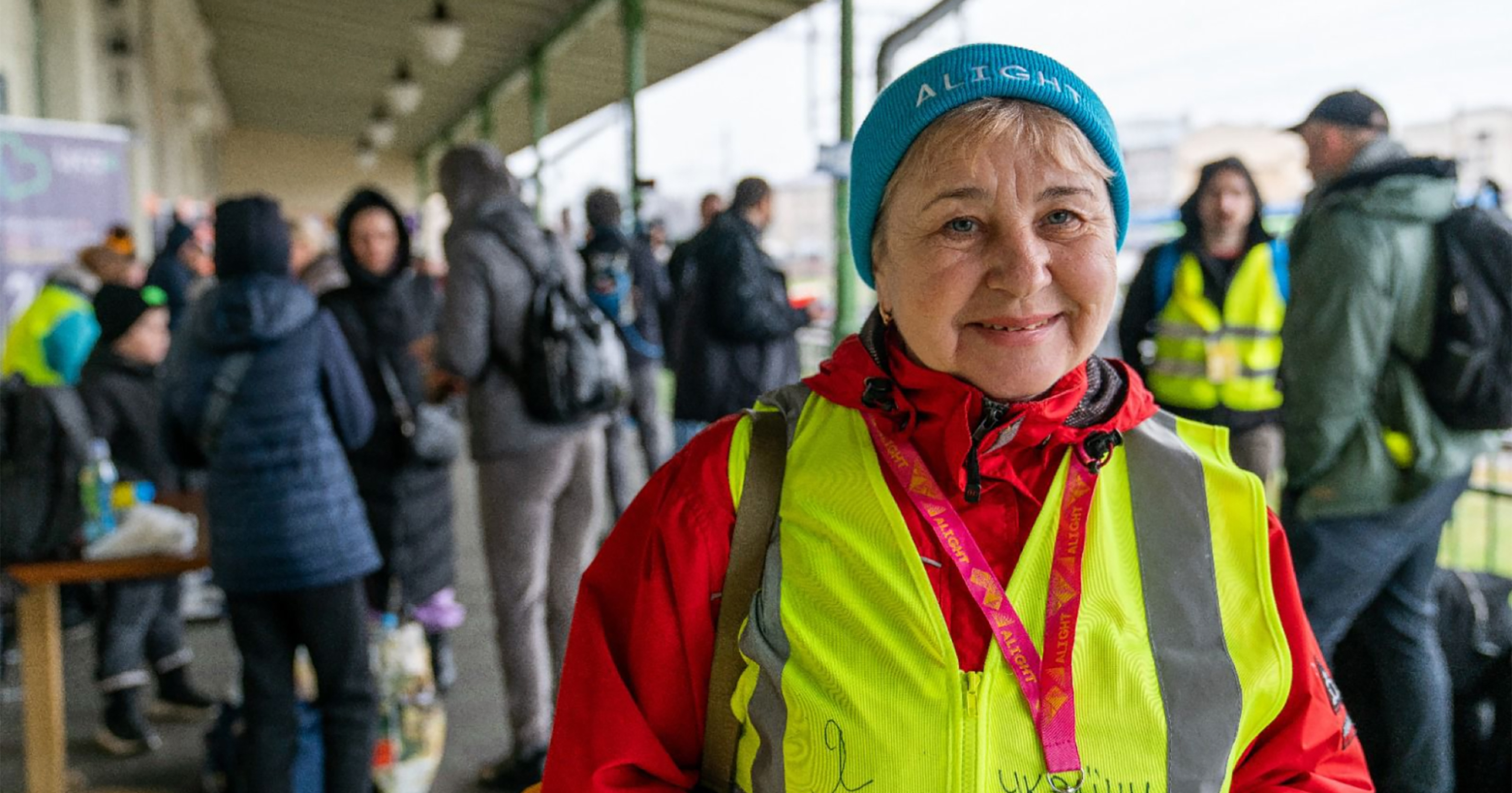
We met Yulia*, a Ukrainian mother in her 40s, at our hotel in Krakow. She had fled from Kyiv with her teenage daughter and toddler and was eager to tell us her story.
Alight, a non-profit that provides humanitarian assistance to people on the move, made the introduction to help us learn more about the refugee experience.
After the Russian invasion, Yulia’s family traveled to her parents’ home just outside the capital. But upon learning that friends had been killed while driving nearby, she decided the family needed to leave Ukraine.
Adult males are required to stay back and defend the country, so Yulia said goodbye to her husband and father and headed toward the Polish border with no destination in mind beyond “out.” She had very few friends to assist her; everyone she knew was in the same situation. At the Medyka border crossing, Yulia, her mother, and her children stood in line through the night to gain entry, then boarded a bus to a hotel in Krakow. It was there that she learned about Alight.
*name changed to protect privacy
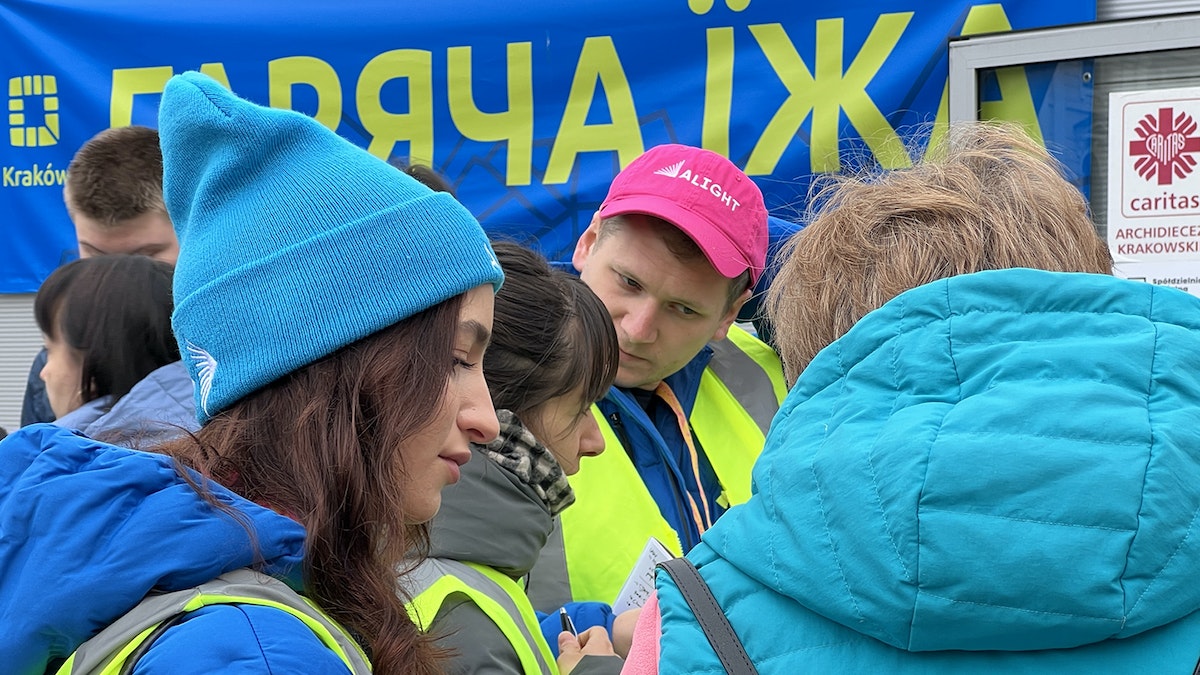
Address the Human Need
Alight has spent 40 years working with displaced people, from distributing food relief during the Somali famine to building emergency shelters for Burundian refugees in Rwanda. Since February, the organization has been in Ukraine and neighboring Poland, where millions fleeing the war have headed.
Within weeks of being on the ground at the border, it became clear to Alight that refugees were encountering a lack of credible guidance on housing in Poland. Alight quickly partnered with Airbnb, which was offering Ukrainians free housing for up to 30 days.
Alight’s Housing Guides—easily identified by their vibrant yellow vests—assisted with bookings. But it was a person-to-person effort, done at the border crossing, at train stations, and in conversations over text and social media. Alight knew it had to greatly scale its ability to get Ukrainians into safe and free accommodations—they needed a tool that could be accessible in varied and rapidly changing contexts. And they wanted to make sure that tool was designed to be useful from day one. “The goal was to learn what Ukrainians needed from the moment of arrival at the border to when they settled in stable housing,” says IDEO Design Director Karen Hentschel.
As an organization that has long applied human-centered design to emergency situations, Alight knew that amidst chaos and uncertainty, designers are able to zoom out, spot underlying human needs, and work quickly to prototype, test, and iterate a solution with the intended audience. Alight worked with our teams at IDEO and IDEO.org to make that happen.

Move Fast and Fix Things
Alight knew that Yulia and her family represented thousands urgently in need of housing and support services. Because we work in IDEO’s Munich studio, we were able to deploy to Poland within days, and IDEO.org designed the initial digital tool within weeks.
Once on the ground in Krakow, IDEO’s Alex Eaton, Tilo Krueger, and David Sjunnesson shadowed Alight’s guides—Ukrainians who had undergone the same journey as the people they were helping and now served as experts in the field. Observing them as outsiders allowed us to spot patterns.
“Alight is very focused on the person in front of them. We were able to take a step back, look at the journey, and see how Alight could support in more places,” says Sjunnesson. "One big part of that was creating a journey map of the first 30 days that identified moments of indecision and decision.”
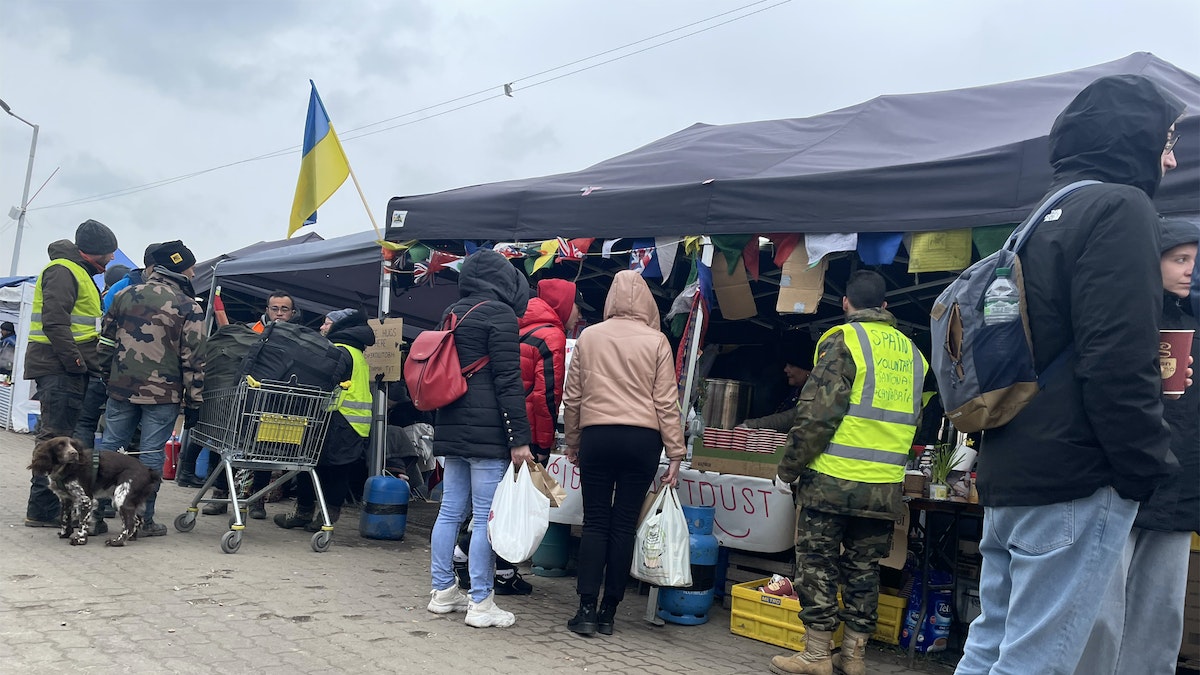
Build Trust
In an emergency, people need more than food and shelter. They need to feel safe. The border is replete with resources, but not all are trustworthy or reliable.
And Alight isn’t a household name, so establishing trust in the organization and its resources was key. We knew that replacing text-based communications with a professional looking, resource-rich digital portal would help.
Thoughtful curation was also key. “You don’t want to have a million different options, you want to have three good ones,” says Sjunnesson. The design team found that information overload compounded people’s sense of overwhelm and recommended that Alight recruit additional guides to travel across Poland to gather data on housing, schools, workplaces, and job boards that the organization could vouch for.
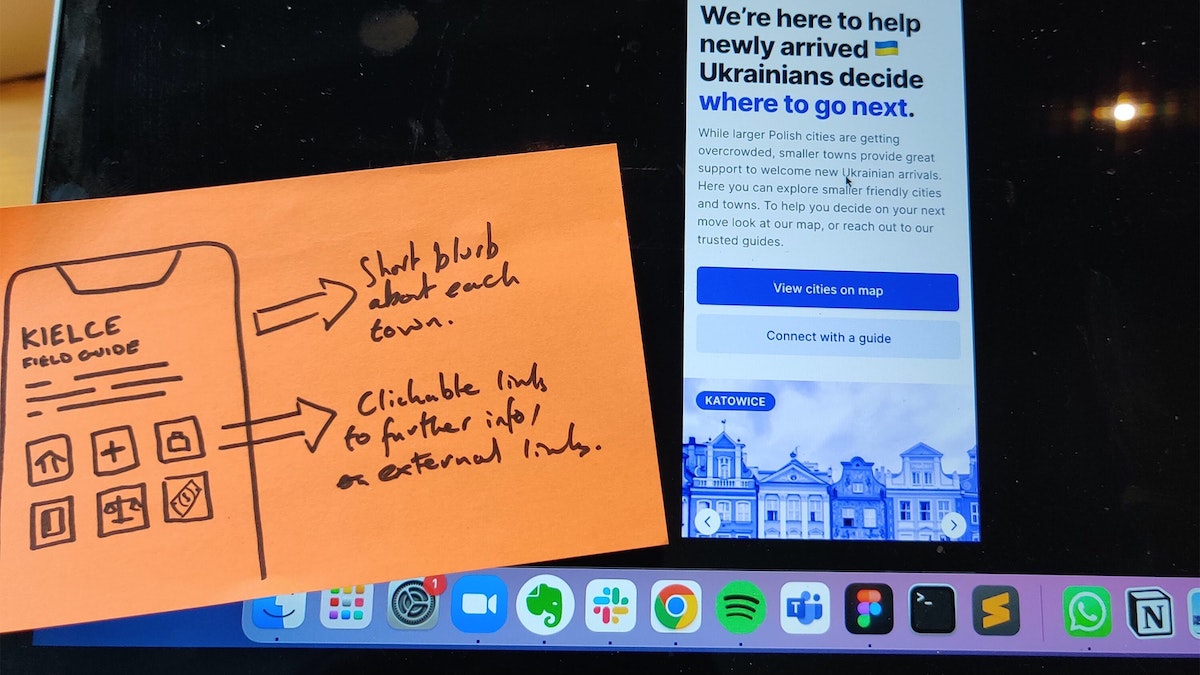
Design for Clarity and Compassion
The digital prototype, which was refined over a six week period, initially featured three cities where Alight had a presence, could provide support, and could guarantee safety and a quality experience. But the way that information was delivered was equally important, says Alight Engagement Guide Leah Combs. The organization hoped for “a softness and a gentleness and a simplicity of navigation, a place where people could land and feel immediately comfortable.”
The resource was also designed to be nimble, with Alight able to make updates to the site within minutes. “The urgency of a humanitarian crisis lends itself to a design process anchored in rapid prototyping and continuous iteration,” says IDEO.org CEO Shauna Carey. “But it’s not just about making something that works well—a human-centered approach helps ensure we’re creating a product that is also responsive to the emotional context of the situation."
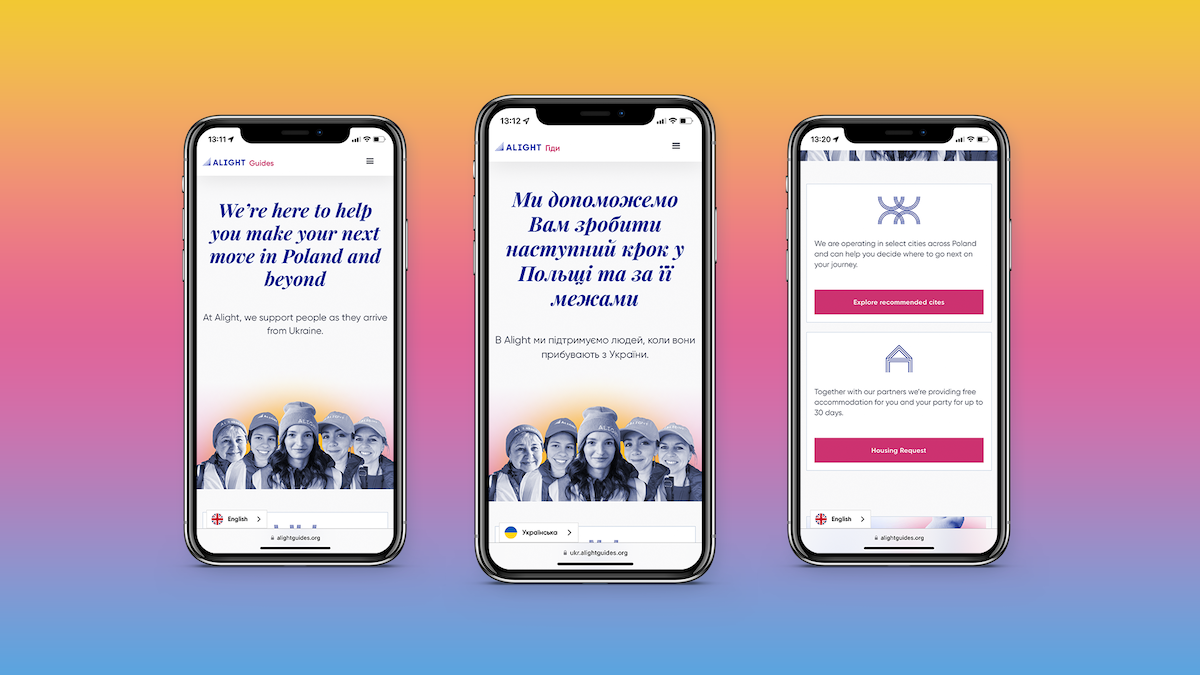
Impact
The site gave Alight the ability to scale beyond time and place. Alightguides.org logged roughly 150,000 views within the first month. With its added reach, Alight provided 25,555 days of safe housing through Airbnb. Ukrainians now have access to Alight in moments when its expertise and assistance might otherwise be invisible: in an apartment, on a bus, or in any of the many moments prior to their arrival at the border.
Aside from tangible support, the tool offers something Yulia told us she desperately needed: The peace that comes from knowing where one’s family is going to sleep that night.
Support Alight's humanitarian efforts here.
—This article was written in collaboration with IDEO Europe, Alight, ideo.org, and our partners.
Words and art
Subscribe

.svg)








